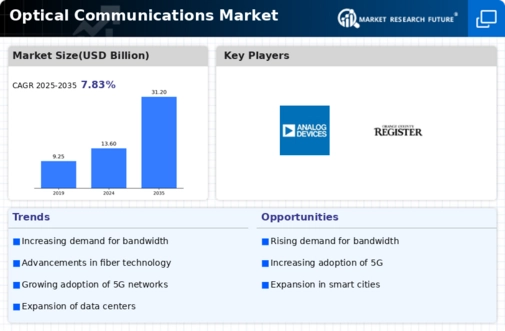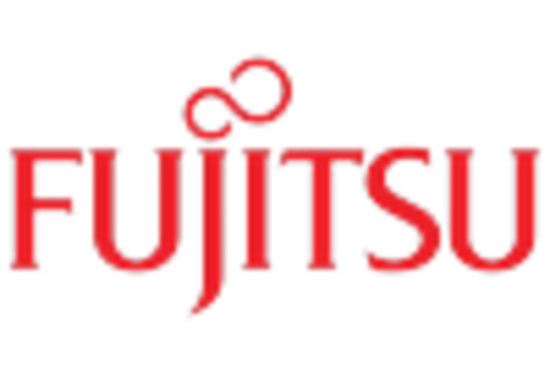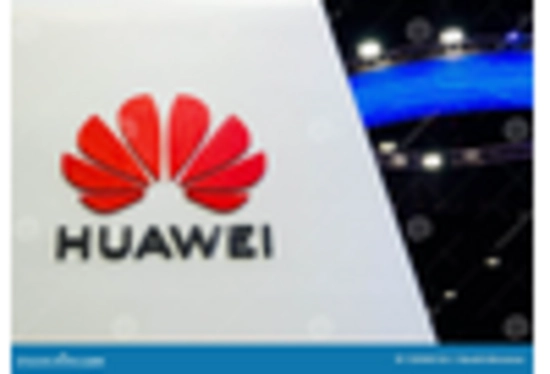Increased Data Traffic
The exponential growth of data traffic is a significant driver of the Optical Communications Market Industry. With the advent of big data, cloud computing, and the Internet of Things, the volume of data transmitted over networks has skyrocketed. Reports indicate that global IP traffic is expected to reach 4.8 zettabytes per year by 2022, necessitating robust optical communication solutions to handle this surge. Optical fibers offer higher bandwidth and greater transmission distances compared to traditional copper cables, making them essential for modern data centers and telecommunications networks. As organizations strive to optimize their data handling capabilities, the Optical Communications Market Industry is likely to experience sustained growth.
Emergence of 5G Technology
The rollout of 5G technology is poised to significantly impact the Optical Communications Market Industry. 5G networks require high-capacity and low-latency communication systems, which are best supported by optical fiber technologies. As mobile operators upgrade their networks to accommodate 5G, the demand for optical communication solutions is expected to rise sharply. Industry estimates suggest that the global 5G infrastructure market could reach USD 700 billion by 2026, with optical communication systems playing a crucial role in this transformation. This shift not only enhances mobile broadband services but also facilitates the development of smart cities and the Internet of Things (IoT), further driving the Optical Communications Market Industry.
Rising Demand for High-Speed Internet
The increasing demand for high-speed internet connectivity is a primary driver of the Optical Communications Market Industry. As more consumers and businesses seek faster and more reliable internet services, the need for advanced optical communication technologies becomes evident. According to recent data, the number of internet users has surged, leading to a projected compound annual growth rate of approximately 10% in the optical fiber market. This growth is largely attributed to the expansion of broadband services and the proliferation of data-intensive applications such as streaming, gaming, and cloud computing. Consequently, telecommunications companies are investing heavily in optical communication infrastructure to meet this demand, thereby propelling the Optical Communications Market Industry forward.
Government Initiatives and Investments
Government initiatives aimed at enhancing digital infrastructure are driving the Optical Communications Market Industry. Many governments are recognizing the importance of high-speed internet access as a critical component of economic development and social equity. As a result, substantial investments are being made in optical communication technologies to expand fiber optic networks, particularly in underserved areas. For instance, various countries have launched programs to subsidize the deployment of fiber optics, which is expected to increase connectivity and stimulate local economies. These initiatives not only support the growth of the Optical Communications Market Industry but also promote innovation and competition among service providers.
Technological Advancements in Optical Components
Technological advancements in optical components are significantly influencing the Optical Communications Market Industry. Innovations such as wavelength division multiplexing (WDM), optical amplifiers, and photonic integrated circuits are enhancing the performance and efficiency of optical communication systems. These advancements enable higher data transmission rates and improved signal quality, which are essential for meeting the demands of modern communication networks. The market for optical components is projected to grow as manufacturers continue to develop cutting-edge technologies that reduce costs and increase reliability. As a result, the Optical Communications Market Industry is likely to benefit from these technological improvements, fostering further adoption of optical communication solutions.
















Leave a Comment